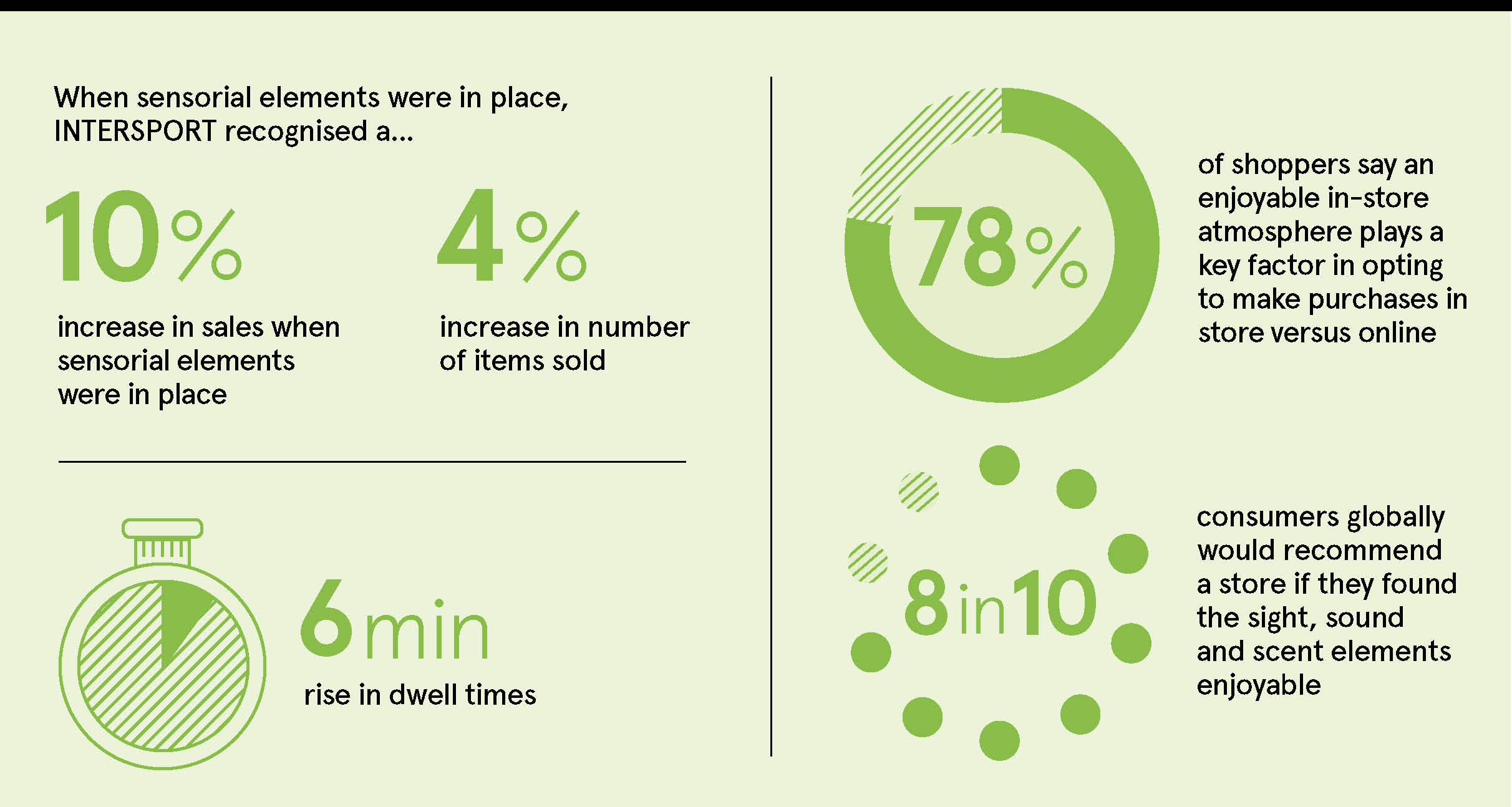When Selfridges opened a skate park within its designer streetwear department at its flagship Oxford Street store in October 2018, some were sceptical. But it was just one of several customer experience initiatives that helped the department store to increase sales by 6 per cent to £1.85 billion for the year to February 2019, bucking wider retail trends. Now, it’s a sign of the times.
It is more important than ever for bricks-and-mortar retailers to differentiate their offering from both competitors and ecommerce platforms. Consumers demand an immersive in-store experience that stands out. Mood Media’s 2019 Global Study shows that 79 per cent of shoppers say an enjoyable in-store atmosphere was influential when deciding to make purchases on the high street, rather than online.
Ecommerce will almost always win on convenience for everyday items. But for inspiration, a sensory experience that fires the imagination and delights the soul is far more powerful. Thanks to technology, retailers have an unprecedented opportunity to create in-store experiences that deeply engage consumers, presenting endless creative possibilities to make an impact.
Our recent study demonstrates the tangible commercial benefits associated with sensory marketing. We partnered with INTERSPORT to conduct a controlled experiment, which compared consumers’ behavioural, emotional and cognitive responses in a “senses-on” phase to a “senses-off” phase and three control stores throughout the period, finding that when sensory marketing was applied, sales increased by 10 per cent.
Our findings underline the importance of investing in the in-store experience. Apt sensory surroundings can influence consumers to stay longer, by approximately six minutes, and consequently make purchases. Consumers bought 4 per cent more articles and what they purchased was on average 6 per cent more expensive. Above all, greater immersion can drive customer loyalty.
Retailers need to focus on developing an in-store experience which focuses on four key trends: immersion, community, customisation and convenience. By appreciating the importance of these trends retailers can align with consumers’ preferences, allowing them to engage with people in a way that grips them and excites their imagination.
Innovative brands in many sectors have started to use technology to align with these four key trends. For example, fashion and beauty retailers have been deploying highly innovative yet practical concepts, such as voice-powered mirrors which can assess a customer’s skin type and suggest products as they apply make-up.

7Fresh is a next-generation supermarket in China that uses smart trolleys to guide customers through the aisles, a mobile payment app with WeChatPay, a 30-minute delivery service and a restaurant where products purchased by customers can be prepared.
In the automotive sector, Nissan recently launched its City Hub flagship store in Paris, including wall-to-ceiling touchscreen ultra-definition LED installations that bring its concepts to life.
We believe retailers across the board will follow the success of such brand and sector pioneers, and start to make a greater investment in leveraging the unique advantages of a physical store. That said, brands need to think strategically about sensory marketing to achieve commercial success. As with all forms of marketing, they need to focus on projecting a consistent image across their channels.
Our sensory marketing research with INTERSPORT demonstrates this. The football area of the INTERSPORT store that featured scent marketing generated 26 per cent more sales than similar unscented zones across the country during the same period.
There is little doubt that retail is becoming evermore competitive. An investment in sensory marketing to elevate the in-store experience and deliver on these findings will become increasingly important in driving sales and fostering brand loyalty.
Mood Media’s global survey validates sensory marketing in terms of return visits, with 90 per cent of consumers globally saying they are more likely to revisit a store if the music, visuals and scent create an
enjoyable atmosphere.
The opportunity is clear. Sensorial marketing is not a nice to have. It is an essential tool that is increasingly impacting retailers’ bottom line in a challenging climate.
For more information please visit moodmedia.co.uk
